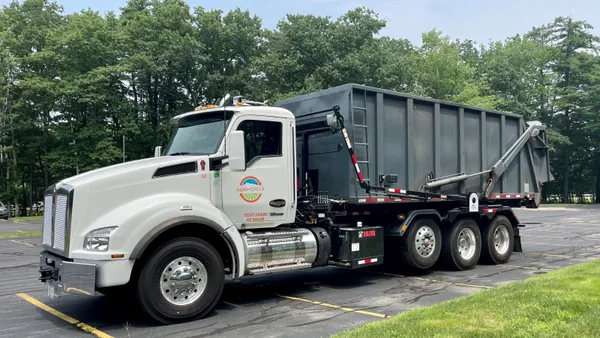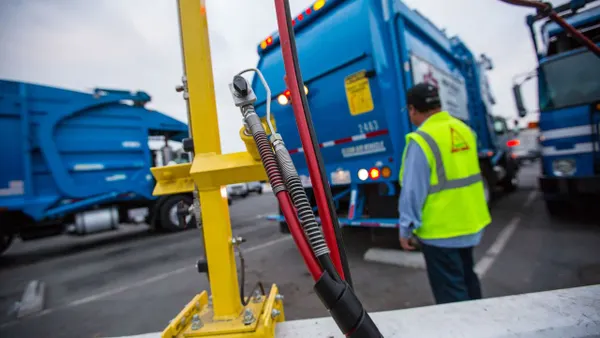Dive Brief:
- A recent study by researchers at the University of California, Davis found the use of compost and cover crops boosted soil carbon content by 12.6%, while cover crops created a net loss of soil carbon. The trial ran for 19 years on a rotation of corn and tomato plots.
- The study used only chicken manure compost, which appears to have a better balance of nutrients than other types when it comes to boosting soil fertility for crops. Research has begun to assess compost made from other organic matter, such as yard waste and food waste.
- It's not yet clear how the compost interacted with or undermined the carbon-removing actions of the cover crops, but the researchers say the results bolster the possibility of western land acting as an agricultural space and carbon sink.
Dive Insight:
The study did not examine the effects of compost alone on soil, nor did the researchers apply the compost and cover crop combination to a simultaneous experimentation on wheat fields. Instead, that trial included separate irrigation, fertilizer and cover crop treatments, which ended in no noticeable soil carbon change.
The findings are also only applicable to California's semi-arid farming landscape, which is carbon-poor relative to Midwestern soils, co-authors Jessica Chiartas and Kate Scow told Waste Dive.
Still, these preliminary results are encouraging for the state, which has multiple related initiatives in the works. In an effort to cut down on greenhouse gas emissions, California plans to reduce organic waste by 75% by 2025. California also sponsors a Healthy Soils Initiative to improve soil quality and make farming in the state more sustainable.
These local priorities are in line with recommendations from the latest United Nations Intergovernmental Panel on Climate Change report. The document outlines how eliminating food waste will help bring down greenhouse gas emissions from the agricultural sector, and notes that carbon sequestration in soil could help curb climate change.
California's waste reduction policy has begun to spur new investment in organics processing infrastructure, including composting operations – and much more is needed in order to meet the 2025 target. According to Chiartas, more research is required to understand what this may mean for soil, and further studies are in the works.
Had this initial study only examined soil near the surface, the researchers would have seen cover crops boost carbon storage by 3.5%. A deeper dive into soil lying 30 to 200 centimeters down, however, revealed that carbon content at that range decreased by 10.8%. These results show the value of soil researchers examining experimental results farther underground.
"There's a lot going on deeper in the soil, deeper than where scientists often focus," said Scow.
If other types of compost are found to store as much carbon, spreading the material on farm fields could provide three benefits: A reduction in organic waste sent to landfills or incinerators, a boost in soil quality for regional agricultural land and a new carbon sink.
That final benefit is recognized by Project Drawdown, a leading climate research organization, as one of the reasons composting is among the top 60 strategies for reducing global carbon output. Recent research has also focused on the potential for soils in climates similar to California's to become larger carbon sinks.
"These semi-arid regions have been slotted as having a lot of potential for carbon storage," said Chiartas.
Correction: A previous version of this article misstated a question about the interaction between compost and cover crops.









